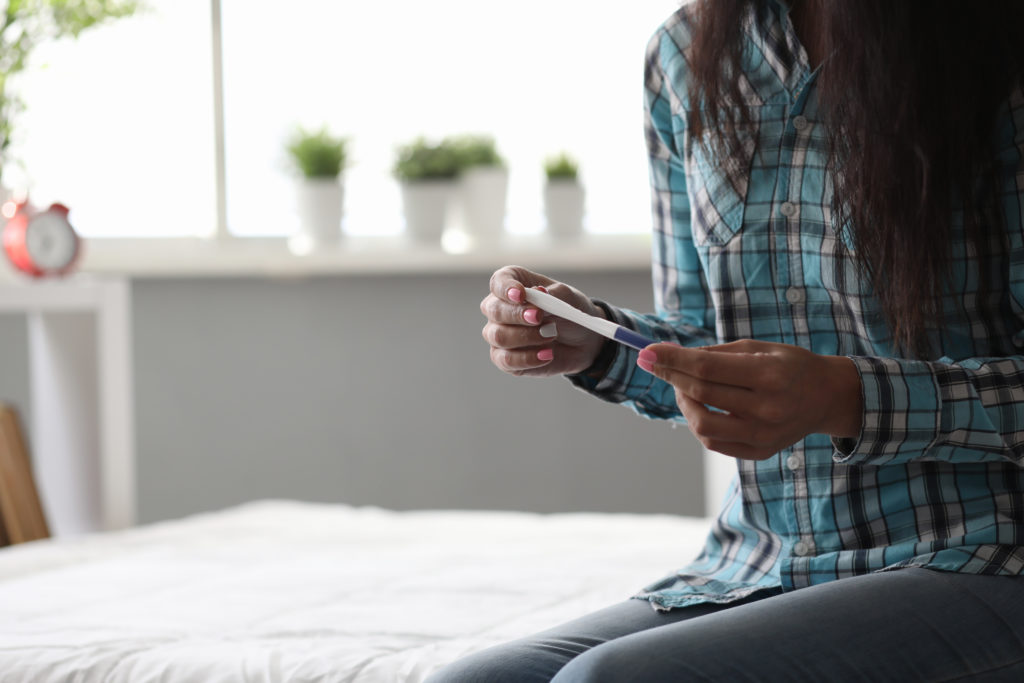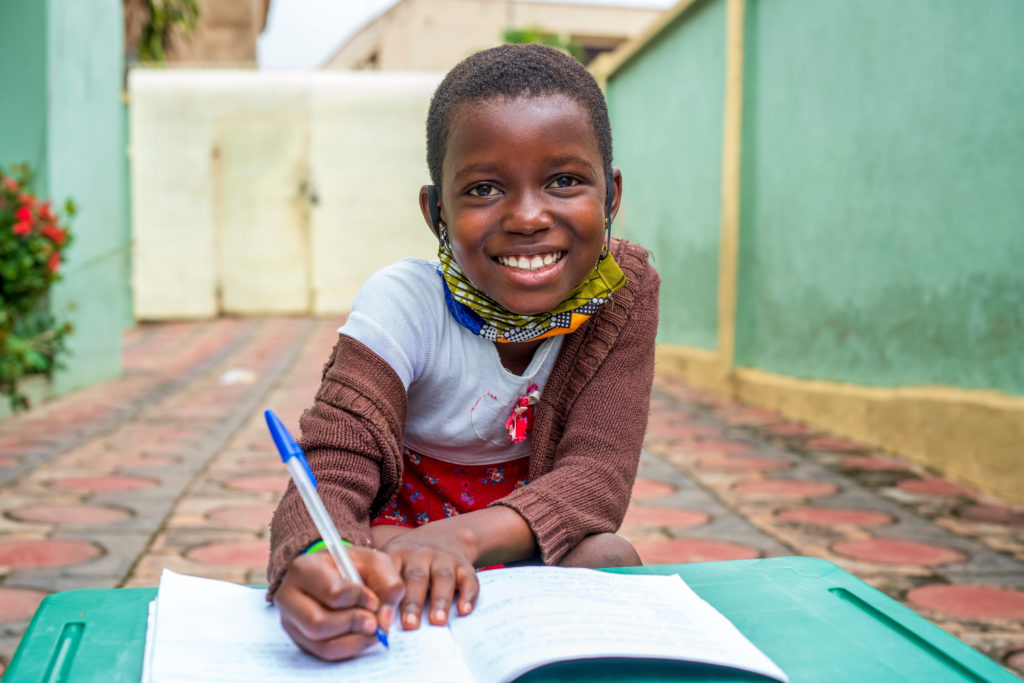Girls have the right to enjoy their fundamental rights just as much as their male counterparts. However, reality paints a different picture. Girls’ rights to life, education, health, food, water, identity, freedom and protection are blatantly trampled. Intersectional discrimination, gender-based violence and the reverberations of wartime are namely, and non-exhaustively, the causes and impediments to the effective realization of the fundamental rights afforded to girls worldwide.

Types of discrimination endured by girls
A large part of the discrimination comes from a gendered perspective that views the female sex as subordinate. Gender discrimination can be understood as “any exclusion or restriction made on the basis of gender that creates barriers for girls, boys, women and/or men in recognizing, enjoying or exercising their full and equal human rights” (Save the Children, n.d.).
In addition, discrimination can be either direct or indirect. Direct discrimination is characterised “by the intent to treat less favourably a person or a group”, whereas indirect discrimination refers “to cases where apparently neutral provisions or practices affect members (or perceived members) of a particular group in less favourable ways” (Council of Europe, n.d.).
Moreover, girls suffer from intersectional, also said “multiple”, discrimination. Individuals may “define themselves, or be defined by others, according to various criteria”, such as, inter alia, “gender, sex, sexual orientation, nationality, ethnicity, social status, disability, religion” (Council of Europe, n.d.). The concept of intersectionality describes all “the ways in which systems of inequality” based on the abovementioned factors can interact and mutually reinforce each other to create multifaceted discriminations (Center for Intersectional Justice, n.d.). Girls are then faced with and suffer from multiple discriminations, all intertwined, and inherently inseparable.
Gender-based violence affecting girls
Femicide
Femicide, or feminicide, is defined as “an intentional killing with a gender-related motivation” and may be driven “by stereotyped gender roles, discrimination towards women and girls, unequal power relations between women and men, or harmful social norms” (UN Women, 2022). It is the most brutal and violent manifestation of endless violence committed against women and girls, and has multiple interconnected and overlapping forms (UN Women, 2022).
Femicide has unfortunately become a universal problem (UN Women, 2022). The numbers gathered to that end across the globe is staggering, with Asia accounting for an estimated 17 800 victims, followed by Africa with 17 200 victims, the Americas with 7 500 victims, Europe with 2 500 victims and Oceania with 300 victims (UN Women, 2022). The reasons for such unlawful and brutal killings are numerous, and can be related to dowry deaths, rape-murder, crimes committed in the name of so-called ‘honour’, and family related abuse (LSE Centre for Women, Peace and Security, n.d.).
Child marriage and early pregnancy
According to the United Nations Children’s Funds (‘UNICEF’), child marriage is defined as “any formal marriage or informal union between a child under the age of 18 and an adult or another child” (UNICEF, n.d.). Child marriage robs young girls of their childhood and forces them to, early on, assume responsibilities that fall to adult and to womanhood (UN Women, 2022). The figures indicate that this harmful practice is still perpetuated, with an “estimated 640 million girls and women alive today being married in childhood” (UNICEF, 2023).

As a consequence of these forced marriages, girl brides are “more likely to experience early pregnancies” (Girls Not Brides, n.d.). This severely impacts their health and girls are left with increased risks of childbirth-related complications, which in turn “can have long-term health impacts” or cause the death of young girls (Girls Not Brides, n.d.). Child marriages further impedes the right to education of young girls, with the other side being that girls who continue to pursue their education are less likely to get married. (Girls Not Brides, n.d.).
Sexual abuse and rape
Rape and sexual assault are “forms of violence in which there is sexual contact without consent – including vaginal or anal penetration, oral sex, and touching of the breasts or genitals” (UNICEF, n.d.). According to UNICEF, around 120 million girls throughout the world, have been victims of forced intercourse or more generally, other forms of forced sexual violence at some point in their lives and of these, around 15 million of girls have been raped (Equality Now, n.d.; UNICEF, 2014).
Sexual violence, sexual harassment, and rape occur more frequently in places or institutions deemed to be safe, such as schools or within family circles (WHO, 2012). An array of factors can be considered as the root causes for such crimes, namely, gender-inequitable views, gender discriminations, gender and social norms linked to traditions and to male superiority, and poor community and legal remedies against such violence (WHO, 2012). As a consequence, girls become concernedly vulnerable to sexual and reproductive health complications, such as unwanted pregnancy, unsafe abortion and being exposed sexually transmitted infections, which includes HIV (WHO, 2012).
Child trafficking and sexual exploitation
Child trafficking is defined as “the recruitment and or transfer, harbouring or receipt of children for the purposes of exploitation” (UNICEF Canada, n.d.). Children on the move and displaced children are the most at risk of being trafficked due to either their isolation, lack of identification documents, or other related factors rendering them vulnerable (UNICEF, 2018).
Girls are particularly at risk of child trafficking and are trafficked for the purpose of “prostitution and pornography, forced labour, including (…) domestic work, arranged marriages or to be ‘sold’ as brides, recruitment for participation in hostilities” (European Institute for Gender Equality, 2016). They are completely deprived of their right to freedom and are at utmost risk as they encounter “high rates of physical and sexual violence, memory loss, sexually transmitted diseases, and traumatic brain injuries” (American Psychological Association, 2023).
Girls’ adversity during armed conflicts or war
During times of armed conflicts or war, women and girls are one of the vulnerable groups affected by violence (Human Rights Watch, 2012). In the course of such events, girls’ access to education and to essential services such as health care, food and water are disrupted either due to war tactics targeting civilians and vulnerable groups or due to interruption of humanitarian aid due to the intensity of the conflict (UN OHCHR, n.d.).
As a consequence, girls are at greater risk “of unplanned pregnancy, maternal mortality and morbidity, severe sexual and reproductive injuries and contracting sexually transmitted infections, including as a result of conflict-related sexual violence” (UN OHCHR, n.d.). In times of armed conflict, the already compromised fundamental rights of girls are wiped out and they are left unprotected and subjected to violations of their rights.
Girls unattended and their fundamental rights breached

The right to life, education, health, food, water, identity, freedom, and protection are often not guaranteed for girls worldwide. Gender equality, which means both girls and boys can benefit from the same set of human rights, resources, opportunities and afforded protections, has not been reached, therefore placing girls in an unfavourable position (UNICEF, n.d.). In order to reach gender equality and ensure girls’ fundamental rights, the international community as a whole and together with States must abide by the following guidelines:
- Address the double burden of gender and age discrimination suffered by girls in all relevant existing laws and policies (Plan International, n.d.).
- Provide health services and nutrition programmes, including HIV testing, prevention, counselling, and care to girls worldwide (UNICEF, n.d.).
- Provide a plan for the access to clean water, sanitation, and hygiene systems, including services for menstrual health (UNICEF, n.d.).
- Integrate a gender-responsive education system, particularly in relation to equitable access to schooling for girls (UNICEF, n.d.).
- Prevent and forbid harmful practices, such as child marriage and female genital mutilation, committed against girls (UNICEF, n.d.).
- Provide gender-responsive social protection and care programmes (UNICEF, n.d.).
More specifically, a range of obligations are incumbent on different stakeholders operating at different scales to promote and protect girls’ rights:
- International organisations, mainly such as the United Nations, must, through their entities, such as UNICEF or UN Women, and through their Charter-based bodies or treaty-based bodies, which includes the Committee on the Rights of the Child, set global standards in order to achieve gender equality, and “with governments and civil society to design laws, policies, programmes and services needed to ensure that the standards are effectively implemented and truly benefit women and girls worldwide” (UN Women, n.d.).
- The international community, more specifically NGOs, must explore and develop strategies and advocacy activities in order to advocate for gender equality and girls’ rights throughout the world (Council of Europe, n.d.).
- Society and civil society have a role and a responsibility to show continued efforts to promote change in relation to existing gender stereotypes (Society for Personality and Social Psychology, 2021).
- Key community members and local communities have a significant influence on encouraging and supporting girls’ rights, and as such must, “challenge community perceptions and build awareness around the barriers that young women face” (CARE, 2022).
- In relation to the right to education specifically, schools must be and remain accessible to all girls, safe, affordable and must enable girls “to learn while in school – this refers not only to traditional academic subjects but to socio-emotional and life skills” (World Bank Blogs, 2020).
- Families and parents are placed on the front lines of the continued struggle for equality for girls and as such, they can “make or break” it for girls with regard to the achievement of their rights (UN Women, 2023).
Gender equality and the fulfilment of girls’ rights are contingent upon a wide range of measures and preventive efforts on the part of multiple protagonists operating within and across different levels. Collectively, these actions and efforts can positively contribute to achieving gender equality and the full realisation of girls’ rights worldwide.
Written by Moïra Phuöng Van de Poël
Internally proofread by Aditi Partha
Last updated on 6 September 2023
Bibliography:
American Psychological Association. (2023, April 24). 7 in 10 human trafficking victims are women and girls. What are the psychological effects? Retrieved from American Psychological Association at https://www.apa.org/topics/women-girls/trafficking-women-girls#:~:text=Trafficked%20women%20and%20girls%20also,typically%20reported%20by%20female%20survivors, accessed in August 2023.
CARE. (2022, October 11). Transforming communities to safeguard girls’ rights. Retrieved from CARE at https://www.care-international.org/stories/transforming-communities-safeguard-girls-rights-photo-essay, accessed in September 2023.
Center for Intersectional Justice. (n.d.). What is intersectionality. Retrieved from Center for Intersectional Justice at https://www.intersectionaljustice.org/what-is-intersectionality, accessed in August 2023.
Council of Europe. (n.d.). Intersectionality and Multiple Discrimination. Retrieved from Council of Europe at https://www.coe.int/en/web/gender-matters/intersectionality-and-multiple-discrimination, accessed in August 2023.
Council of Europe. (n.d.). NGOs as advocates for gender equality and women’s rights. Retrieved from Council of Europe at https://www.coe.int/en/web/ingo/ngos-as-advocates-for-gender-equality-and-women-s-rights, accessed in September 2023.
Equality Now. (n.d.). Sexual violence against adolescent girls. Retrieved from Equality Now at https://www.equalitynow.org/sexual-violence-against-adolescent-girls/, accessed in August 2023.
European Institute for Gender Equality. (2016). Trafficking in women and girls. Retrieved from European Institute for Gender Equality at https://eige.europa.eu/publications-resources/thesaurus/terms/1448?language_content_entity=en, accessed in August 2023.
Girls Not Brides. (n.d.). Adolescent pregnancy and child marriage. Retrieved from Girls Not Brides at https://www.girlsnotbrides.org/learning-resources/child-marriage-and-health/adolescent-pregnancy-and-child-marriage/#:~:text=Child%20brides%20are%20more%20likely,impacts%2C%20or%20even%20cause%20death, accessed in August 2023.
Girls Not Brides. (n.d.). Child marriage and education. Retrieved from Girls Not Brides at https://www.girlsnotbrides.org/learning-resources/child-marriage-and-education/, accessed in August 2023.
Human Rights Watch. (2012). Women and Armed Conflict. Retrieved from Human Rights Watch at https://www.hrw.org/topic/womens-rights/women-and-armed-conflict, accessed in August 2023.
LSE Centre for Women, Peace and Security. (n.d.). Right to life. Retrieved from LSE Centre for Women, Peace and Security at https://blogs.lse.ac.uk/vaw/landmark-cases/right-to-life/, accessed in August 2023.
Plan International. (n.d.). Policy for Girls’ rights. Retrieved from Plan International at https://plan-international.org/un/our-priorities/girls-rights/, accessed in September 2023.
Save the Children. (n.d.). Gender Discrimination: Inequality Starts in Childhood. Retrieved from Save the Children at https://www.savethechildren.org/us/charity-stories/how-gender-discrimination-impacts-boys-and-girls, accessed in August 2023.
Society for Personality and Social Psychology. (2021, March 26). Has Society Changed in Implicit and Explicit Gender Stereotypes?. Retrieved from Society for Personality and Social Psychology at https://spsp.org/news-center/character-context-blog/has-society-changed-implicit-and-explicit-gender-stereotypes, accessed in September 2023.
UN OHCHR. (n.d.). Women’s human rights and gender-related concerns in situations of conflict and instability. Retrieved from UN OHCHR at https://www.ohchr.org/en/women/womens-human-rights-and-gender-related-concerns-situations-conflict-and-instability, accessed in August 2023.
UN Women. (n.d.). Work and Priorities. Retrieved from UN Women at https://www.unwomen.org/en/about-us/about-un-women, accessed in September 2023.
UN Women. (2022, September 7). Explainer: Sustainable Development Goal 5. Retrieved from UN Women at https://www.unwomen.org/en/news-stories/explainer/2022/09/explainer-sustainable-development-goal-five?gclid=Cj0KCQjwz8emBhDrARIsANNJjS5q66lfiSPTNZJQhIDpVbFqwtnqj52_4-m04GMLyATWms-9L-wfZS0aAv0HEALw_wcB, accessed in August 2023.
UN Women. (2022, November 25). Five essential facts to know about femicide. Retrieved from UN Women at https://www.unwomen.org/en/news-stories/feature-story/2022/11/five-essential-facts-to-know-about-femicide, accessed in August 2023.
UN Women. (2023, May 15). Gender equality starts at home: Five ways to drive change within the family. Retrieved from UN Women at https://www.unwomen.org/en/news-stories/feature-story/2023/05/gender-equality-starts-at-home-five-ways-to-drive-change-within-the-family#:~:text=Around%20the%20world%2C%20families%20are,violated%20and%20their%20voices%20stifled, accessed in September 2023.
UNICEF. (n.d.). 12 Questions and Answers about Sexual Violence. Retrieved from UNICEF at https://www.unicef.org/eca/media/10251/file/QA%20Sexual%20Violence%20EN.pdf, accessed in August 2023.
UNICEF Canada. (n.d.). Child trafficking. Retrieved from UNICEF at https://www.unicef.ca/en/child-trafficking, accessed in August 2023.
UNICEF. (n.d.). Child protection – Harmful practices – Child marriage. Retrieved from UNICEF at https://www.unicef.org/protection/child-marriage, accessed in August 2023.
UNICEF. (2018, July 29). Children account for nearly one-third of identified trafficking victims globally. Retrieved from UNICEF at https://www.unicef.org/press-releases/children-account-nearly-one-third-identified-trafficking-victims-globally, accessed in August 2023.
UNICEF. (n.d.). Gender Action Plan, 2022-2025. Retrieved from UNICEF at https://www.unicef.org/gender-equality/gender-action-plan-2022-2025#:~:text=UNICEF%20calls%20for%20every%20adolescent,from%20child%20marriage%20and%20violence, accessed in August 2023.
UNICEF. (2023, May 5). Is an End to Child Marriage within Reach? Retrieved from UNICEF at https://data.unicef.org/resources/is-an-end-to-child-marriage-within-reach/?_gl=1*qzw8zd*_ga*MTQ1OTY2ODUwNC4xNjU4OTQ5MTc5*_ga_9T3VXTE4D3*MTY4MzIzMDQyMC43Ni4xLjE2ODMyMzA0MjAuMC4wLjA, accessed in August 2023.
UNICEF. (2014, October 10). Nearly one in four adolescent girls experience physical violence. Retrieved from UNICEF at https://www.unicef.org/mena/press-releases/nearly-one-in-four-adolescent-girls-experience-physical-violence, accessed in August 2023.
WHO. (2012). Understanding and addressing violence against women. Retrieved from WHO at https://apps.who.int/iris/bitstream/handle/10665/77434/WHO_RHR_12.37_eng.pdf, accessed in August 2023.
World Bank Blogs. (2020, March 6). Girls’ education, gender equality, and the role of civil society. Retrieved from World Bank Blogs at https://blogs.worldbank.org/education/girls-education-gender-equality-and-role-civil-society, accessed in September 2023.

